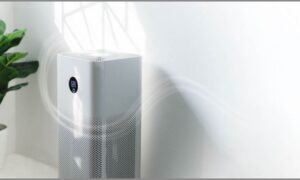The dust, dust mites, pet dander, mold, smoke particles, car exhaust, kitchen smoke, and gaseous pollutants are all removed by air purifiers.
The “Global Smart Air Purifiers Market Size, Share & Industry Trends Analysis Report” report has been recently released by ResearchAndMarkets.com’s offering. The global smart air purifiers market size is expected to reach $8.4 billion by 2028, rising at a market growth of 7.9 percent CAGR during the forecast period.
The air purifier devices have been around for a long time. The certain air purifiers called smart air purifiers now come equipped with Wi-Fi capabilities, due to technological advancements. This means users don’t have to manually turn it on and off or check the filters to make sure they’re clean; instead, they are able to control and monitor the purifier from their phone.
The dust, dust mites, pet dander, mold, smoke particles, car exhaust, kitchen smoke, and gaseous pollutants are all removed by air purifiers. The smart air purifiers use a smartphone-enabled app to monitor and adjust air quality, as well as to provide real-time readings of quality data.
The gadget also allows users to measure indoor air quality over time, allowing them to see when the time of day has the best and worst air quality. The use of smart air filtration and purifier solutions is expected to increase as air quality continues to deteriorate due to high smoking, pollution, and PM2.5 levels.
The World Health Organization (WHO) estimates that 9 out of 10 people breathe contaminated air with high levels of contaminants. According to the report, roughly 7 million people die prematurely each year as a result of outdoor and interior air pollution, with 3.8 million dying as a result of indoor air pollution.
Over the projected period, the smart air purifiers market is expected to be driven by deteriorating air quality across regions and increased awareness about the benefits of using air purifiers.
Indoor pollutants and PM2.5 levels above a certain threshold increase the risk of respiratory disorders, heart disease, cancer, dizziness, fatigue, asthma, and eye irritation, among other ailments. To address the increased demand, manufacturers concentrate on product innovation and new product releases.
Market Growth Factors
Rising Pollution in Developing Countries
Developing countries such as China and India have very pollution levels and many areas in these countries have extremely high air quality index levels. Thus, residents of these areas are expected to install air purifiers in their homes to at least keep the indoor air clean and fresh.
The market is expected to develop due to the rising demand for anti-pollution goods as pollution levels rise. The rising prevalence of airborne infections is expected to accelerate product adoption in the near future in developing countries. Cleaning the air using an air purifier also helps to clean the rest of the house. Pollen, mold spores, dust mites, human skin cells, hair, and insect debris are among the airborne particles that make up dust, and air purifiers with a HEPA filter may trap them.
Allergies and Asthma are controlled by air purifiers
Mold, pet dander, pollen, and germs are all airborne particles that can cause allergies and asthma episodes. Indoor air quality can be up to five times worse than outside air quality, according to the US Environmental Protection Agency.
As a result, having a top-quality True HEPA filter in the house can help regulate allergies and asthma by reducing the number of allergens and asthma-inducing particles in the air one breathes.
This benefit has led to an increase in the demand for smart purifiers. Many common household products can potentially release dangerous pollutants into the air for up to two years. Building supplies, adhesives, wall paint, furniture, and cleaners are all examples.
Market Restraining Factors
Air Purifiers are Take up a Lot of Space and Make Noise and Some Produce Ozone
Air purifiers create some noise, even if it is not excessive, and one should assess how much noise one can endure. Especially if one wants to use it for anything like working from their home office. The sound level of a quiet air purifier is usually between 30 and 40 dB.
To mild rainfall, this is roughly as loud as a whisper. Some air purifiers, on the other hand, can produce up to 70 decibels, which is comparable to traffic noise and will undoubtedly be an annoyance. An air purifier’s noise and light might be distracting, especially late at night when someone is attempting to sleep. Some air purifiers are rather large, and they can be a nuisance.
Cookie Consent
We use cookies to personalize your experience. By continuing to visit this website you agree to our Terms & Conditions, Privacy Policy and Cookie Policy.














